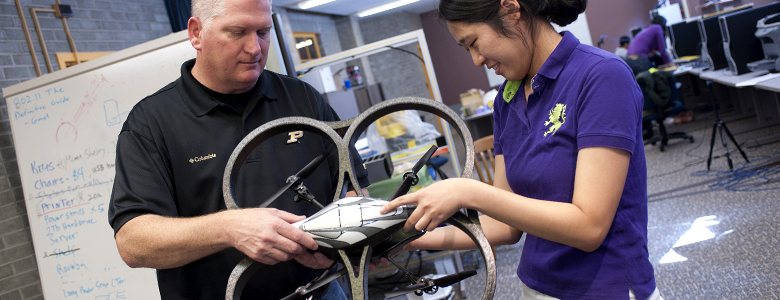
With a focus on robotics, Eric Matson’s research keeps him and his graduate students very busy. The research projects he undertakes as part of the Center for Robotic Innovation, Commercialization and Education (RICE) can be addressed using four fundamental technologies, Matson says.
The technologies he and fellow researchers have developed include single-use, inexpensive robotics; low-cost radar; auto-aiming and configurable wireless networks; and integration of humans, agents, robots, machines and sensors (HARMS).
One such project is a collaboration between Matson and researchers at Wright State University, Air Force Research Labs (who is also the funder), and the Air Force Protection Directorate. They are working on a better way to gauge the threat of a gaseous plume.
“If a tanker explodes on the expressway, the big issue is not knowing what’s in the plume,” Matson says. “We’ve developed technology that allows responders to escape harm. It’s a low-cost, unmanned aerial vehicle system with an organic gas sensor. It can map the plume and measure densities and the types of gases that are a part of it. It can send back data about the chemical make-up, and it can trace where the plume may be going, which is especially important if there is a hospital, school, or daycare downwind.”
This project is only one example of the types of challenges the RICE researchers take on. Their emphasis is on creating a full response system using the four types of technologies they know well. The technologies can be used for bomb disposal, during a large fire outbreak or as another level of safety for event management.
A recent partnership with the South Korean Institute for Information and Communications Technology Promotion helped Matson create the Korean Software Square on campus. It created the need for more research projects for Korean students visiting Purdue over a five-year period. Matson believes the facility, located across the street from Purdue’s Union Club Hotel, could double its research capacity in the near future.
